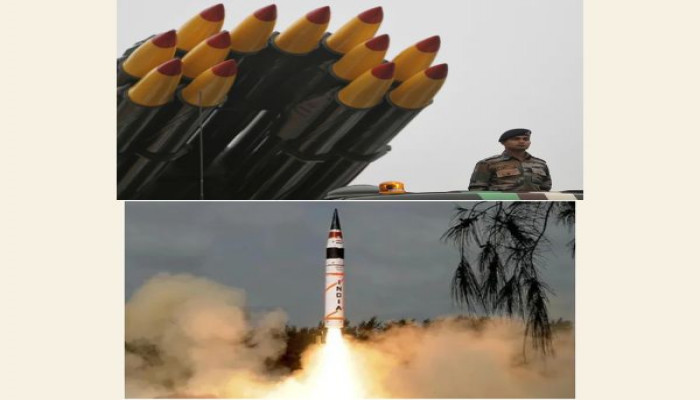India to test indigenous hypersonic missile ET-LDHCM under Project Vishnu
- In Reports
- 06:26 PM, Jun 11, 2025
- Myind Staff
India took a significant leap in its strategic defence capabilities by preparing to test its most advanced indigenous hypersonic missile. The missile, named the Extended Trajectory Long Duration Hypersonic Cruise Missile or ET LDHCM, was developed entirely with domestic technology under the Defence Research and Development Organisation’s (DRDO) classified initiative called Project Vishnu.
According to a report by Daily Jagran, the missile was described as a potential game changer in the Asian military balance.
The ET LDHCM had a top speed of Mach 8, which was approximately 11,000 kilometers per hour. It was capable of carrying out swift and devastating strikes deep into enemy territory, including targets in China and Pakistan.
By achieving this capability, India joined an elite group of countries, including the United States, China, and Russia, that had demonstrated operational success in hypersonic weapons technology.
India designed the missile for both conventional and nuclear missions. It could carry warheads weighing between 1,000 and 2,000 kilograms and could travel about 1,500 kilometres. According to defence sources, the missile’s velocity and ability to manoeuvre mid-flight made it nearly impossible to intercept with current radar and air defence systems.
An advanced scramjet engine powered the missile. The engine used atmospheric oxygen for combustion, which enabled the missile to sustain hypersonic speeds for extended durations.
DRDO had already conducted a successful 1,000-second ground test of the scramjet engine. This marked a major milestone in the missile’s development.
Unlike traditional ballistic missiles, the ET LDHCM flew at low altitudes and was capable of mid-course corrections. It was constructed using heat-resistant and oxidation-resistant materials that could withstand extreme conditions, including temperatures up to 2,000 degrees Celsius.
The ET LDHCM stood out due to its versatility. India developed it to launch from land-based platforms, aircraft, or naval platforms. This gave India expanded tactical and strategic strike options. Its pinpoint accuracy and ability to evade interception made it suitable for targeting enemy command centres, radar installations, naval assets and fortified bunkers.
The missile’s development marked India’s second successful hypersonic programme in less than a year. India had previously tested a long-range hypersonic missile in November 2024. Once inducted, the ET LDHCM was expected to shift the regional power balance and significantly enhance India’s deterrence capabilities.
Experts noted that advancements in hypersonic technology could also support broader applications such as satellite launches, aerospace development, and disaster response. The project encouraged private sector collaboration. Several Indian MSMEs and defence firms contributed to the project, helping drive local innovation and job creation.
The successful deployment of the ET LDHCM was expected to give India a tactical edge. The missile’s speed, range, manoeuvrability, and ability to survive extreme conditions made it a valuable asset in India’s strategic arsenal.
Once testing concluded and the missile became operational, India planned to deploy the ET LDHCM across all three services. This step aimed to strengthen India’s preparedness for future conflicts in an increasingly volatile geopolitical environment.







Comments